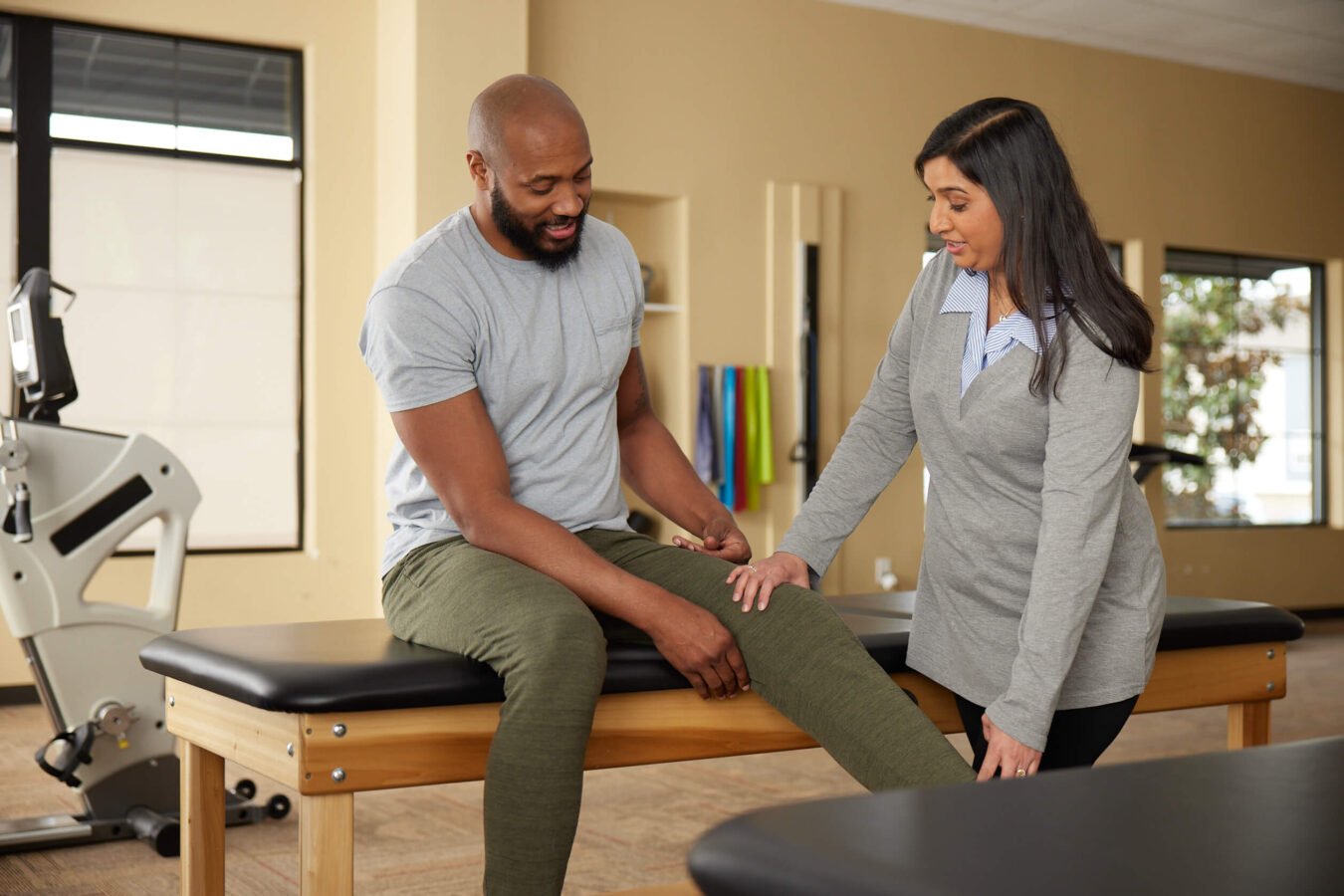
Medically reviewed by Misty Seidenburg
An astounding 780,000 total knee replacements are performed in the U.S. every year. These surgeries significantly enhance mobility and stability for patients who previously struggled with sitting, standing, or walking due to pain.
Physical therapy is not just a recommendation but a crucial part of post-surgery recovery. It’s a journey that you, as a patient, play an active role in. It aids in getting you back on your feet, building your strength, and restoring function in your new knee.
Learn what to expect from physical therapy after total knee replacement, along with safe and effective knee replacement therapy exercises your therapist may prescribe after surgery.
It’s crucial to move soon after surgery. A lack of movement will cause your muscles to tense up, putting added pressure on your knee and increasing your pain level. Tight muscles also make it difficult to bend and flex the knee, and if you don’t address that tension, you won’t achieve the most mobility possible from your new knee. So, let’s get moving and start your recovery journey right away!
Patients who undergo hip and knee replacement are also at risk of blood clots, also known as deep vein thrombosis (DVT). That’s why physical therapy is not just recommended; it’s a crucial part of your recovery plan. Starting as early as the first day after surgery and continuing for several months significantly lowers the risk of these complications.
Within a few hours of your knee replacement surgery, a healthcare provider or physical therapist will assist you with standing and walking on your new knee. Initially, you’ll start with a few brief walks, usually with the aid of a walker.
In the first few days, you’ll work with your physical therapist on the routine activities you do at home, like getting in and out of a chair and climbing steps. This gradual progression is designed to help you regain your mobility and independence.
As part of your physical therapy journey, you’ll gradually be introduced to strength and range of motion (ROM) exercises. These exercises are designed to strengthen and stabilize your knee.
As you progress, you’ll transition from using a walker or cane to walking without mobility aids. This gradual transition is a testament to your progress and the effectiveness of the therapy, giving you hope and optimism about your knee replacement recovery.
It’s important to use the walking aid until your physical therapist or physician tells you to discontinue it. Using the walking aid can help you prevent walking with a long-term limp and ensure that you have adequate strength and range of motion of your leg to support you.
Physical therapy may continue for up to three or four months after surgery. During this stage, the goals are to continue building muscle strength, improve flexibility, and increase cardiovascular capacity so you can return to your normal activities.
Balance training is also essential to help your muscles “relearn” how to respond to outside changes, keeping you stable and reducing falls. Activity-specific training may also be included to help you perform tasks unique to your habits and interests.
Your physical therapist is an invaluable source of support throughout knee replacement recovery. They help you stay on schedule with therapy to get the maximum results and guide you to avoid common missteps that can delay your progress.
Remember these tips during knee replacement physical therapy to rehab safely and effectively:
Now that we’ve covered the don’ts let’s mention a very important do. Walking as a complement to physical therapy is one of the most effective ways to promote rehabilitation after knee replacement. With your therapist’s approval, start out with brief walks, gradually working up to at least 30 minutes per day.
Your physical therapist may recommend the following exercises after total knee replacement to help increase circulation to the legs and feet and strengthen your leg muscles. These movements focus on the muscles in the knee, quadriceps, hamstrings, and hips.
Joint replacement physical therapy typically involves both active and passive exercises. Active exercise requires the patient to exert force to move their body. Physical activity not only helps to increase function and recovery and reduce swelling in the surgical area, but it also has many other benefits. It improves heart health, reduces pain and stiffness, and boosts moods.
With passive exercise, an outside force moves the muscles without the patient’s voluntary effort or muscle contraction. That outside force can come from another body part, a machine, or the physical therapist. These movements improve ROM and help stretch muscles and reduce stiffness.
Before starting knee replacement physical therapy exercises, check with your provider and physical therapist to ensure they are safe and appropriate for your condition.
Remember, even if you have only had one knee replacement, you can do these exercises on both legs to reap all the benefits of these active and passive exercises. Your physical therapist will tell you what to expect during exercise, like minor pressure, tightness, or discomfort, and the signs it’s time to take a break and rest.
Joint replacement offers a new lease on life in many ways. While recovery requires dedication and determination, the rewards are worth it. As physical therapists, it is gratifying patients to help patients regain their mobility and become pain-free after surgery. Find a physical therapy clinic near you to schedule an evaluation for total joint replacement rehabilitation.
External Sources: